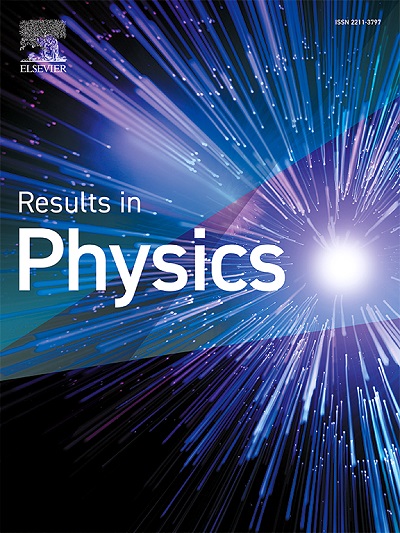Determination of low concentration glucose solution using Raman spectroscopy based on the internal standard method
IF 4.4
2区 物理与天体物理
Q2 MATERIALS SCIENCE, MULTIDISCIPLINARY
引用次数: 0
Abstract
Glucose is an essential substance for life and exists in a cyclic equilibrium in solution. Raman spectroscopy is utilized to differentiate substances based on their glucose concentration. This study employed solid-state density functional theory to simulate the Raman spectra of D(+)-glucose, D-glucose monohydrate, and two types of glucopyranose. Experimental spectra were obtained for D-glucose monohydrate and solutions of varying concentrations. The calculation results of various glucose configuration theories indicate that 1125 cm−1 is the characteristic peak of glucose. This finding aligns with the experimental results and literature presented in this article, addressing concerns regarding the validity of glucose characteristic peaks.
The peak at 1640 cm−1, attributed to water, serves as the normalized internal standard. The correlation coefficients obtained from linear regression analysis were all greater than 0.990, with limits of detection (LOD) of 48.1 mg/dL and 40.3 mg/dL, respectively. The minimum detectable concentration (MDC) for qualitative analysis is 12.5 mg/dL. The relative area method has been demonstrated to be a direct and effective approach for accurately quantifying low-concentration glucose solutions.
基于内标法的拉曼光谱法测定低浓度葡萄糖溶液
葡萄糖是生命所必需的物质,在溶液中处于循环平衡状态。拉曼光谱是根据物质的葡萄糖浓度来区分物质的。本研究采用固态密度泛函理论模拟了D(+)-葡萄糖、D-葡萄糖一水和两种类型的葡萄糖吡喃糖的拉曼光谱。得到了d -葡萄糖一水和不同浓度溶液的实验光谱。各种葡萄糖构型理论的计算结果表明,1125 cm−1是葡萄糖的特征峰。这一发现与本文中提出的实验结果和文献一致,解决了对葡萄糖特征峰有效性的担忧。1640 cm−1处的峰为水,可作为归一化内标。线性回归分析的相关系数均大于0.990,检出限(LOD)分别为48.1 mg/dL和40.3 mg/dL。定性分析的最低检测浓度(MDC)为12.5 mg/dL。相对面积法已被证明是一种准确定量低浓度葡萄糖溶液的直接有效方法。
本文章由计算机程序翻译,如有差异,请以英文原文为准。
求助全文
约1分钟内获得全文
求助全文
来源期刊

Results in Physics
MATERIALS SCIENCE, MULTIDISCIPLINARYPHYSIC-PHYSICS, MULTIDISCIPLINARY
CiteScore
8.70
自引率
9.40%
发文量
754
审稿时长
50 days
期刊介绍:
Results in Physics is an open access journal offering authors the opportunity to publish in all fundamental and interdisciplinary areas of physics, materials science, and applied physics. Papers of a theoretical, computational, and experimental nature are all welcome. Results in Physics accepts papers that are scientifically sound, technically correct and provide valuable new knowledge to the physics community. Topics such as three-dimensional flow and magnetohydrodynamics are not within the scope of Results in Physics.
Results in Physics welcomes three types of papers:
1. Full research papers
2. Microarticles: very short papers, no longer than two pages. They may consist of a single, but well-described piece of information, such as:
- Data and/or a plot plus a description
- Description of a new method or instrumentation
- Negative results
- Concept or design study
3. Letters to the Editor: Letters discussing a recent article published in Results in Physics are welcome. These are objective, constructive, or educational critiques of papers published in Results in Physics. Accepted letters will be sent to the author of the original paper for a response. Each letter and response is published together. Letters should be received within 8 weeks of the article''s publication. They should not exceed 750 words of text and 10 references.
 求助内容:
求助内容: 应助结果提醒方式:
应助结果提醒方式:


